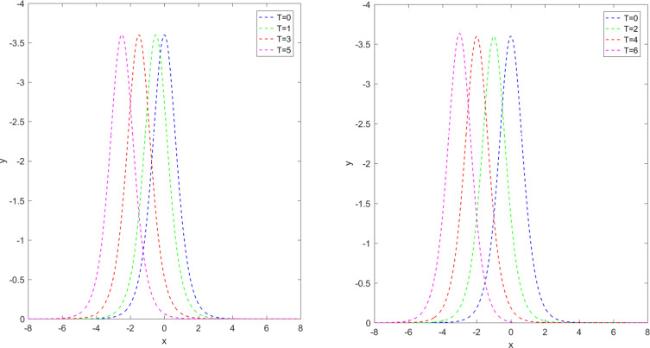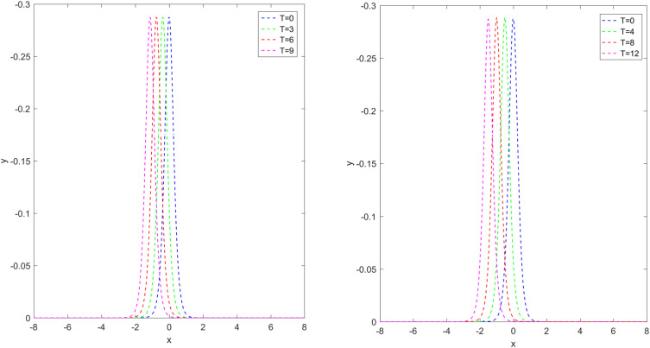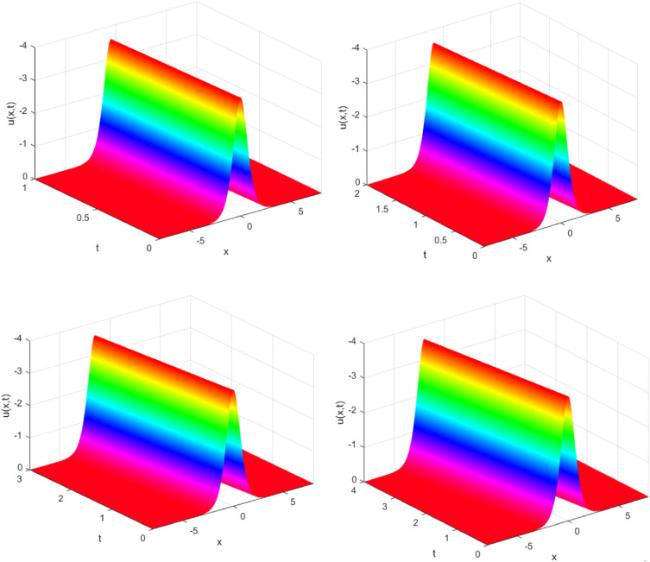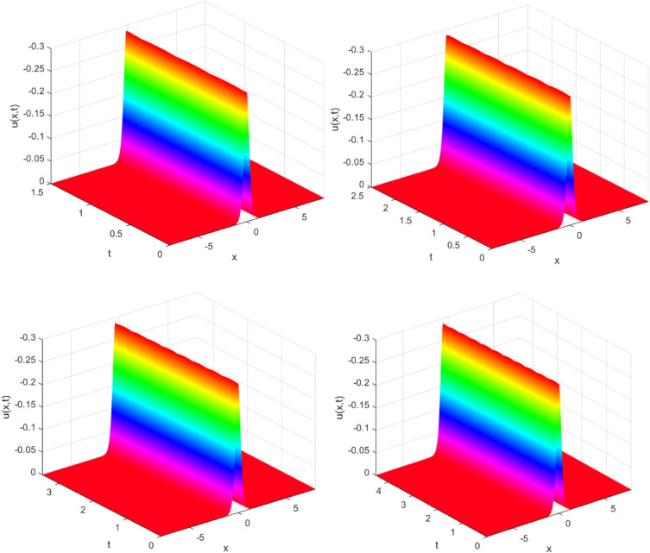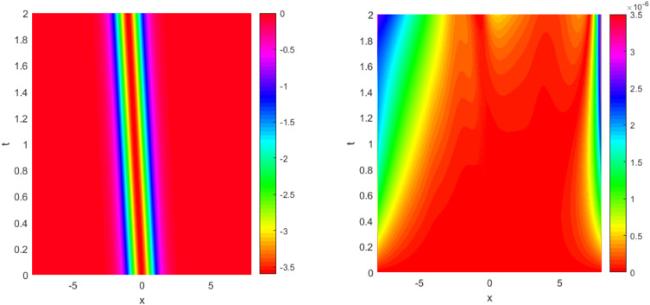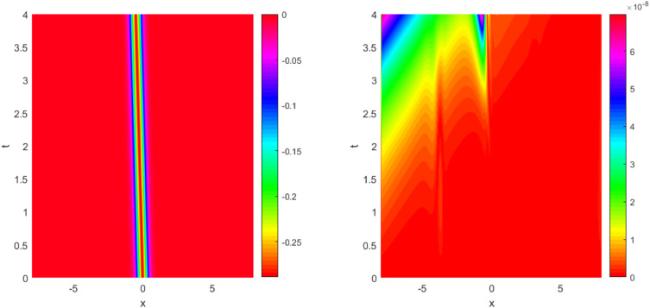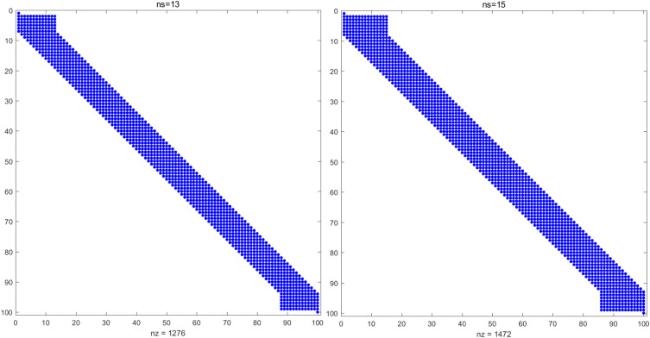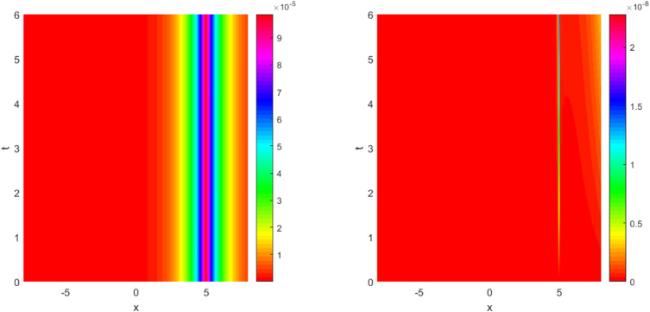This problem is examined by means of the LRBF-FD method with various parameters of
,
and
at the final time
.
Table 1 lists the
norm errors, CN and CPU run times (in seconds) for Case I with
when
at various values of stencil sizes
.
Table 2 compares the
,
, and
norm errors and CPU run times with method described in Zabihi and Saffarian
[19] for Case I by taking
,
and
at several final times.
Table 3 makes the comparison of the
,
, and
norm errors and CPU run times with method introduced in Zabihi and Saffarian
[19] for Case II by choosing
,
and
at several final times. In view of
Tables 2 and 3, we can see that the LRBF-FD collocation technique is more accurate than the scheme presented in Zabihi and Saffarian
[19].
Fig. 2 plots the motion of the single solitary wave with
and
at different final times
in Case I over spatial domain
.
Fig. 3 represents the motion of the single solitary wave with
and
at various final times
in Case II over spatial domain
. As seen in Figs. 2 and 3, the single solitons move to the left at a constant speed preserving their amplitude and shape.
Fig. 4 portraits the soliton profiles in Case I when
,
and
at various temporal intervals.
Fig. 5 presents the soliton profiles in Case II by letting
,
and
at various temporal intervals.
Fig. 6 depicts the contour of solutions and associated absolute errors in Case I by taking
,
and
at temporal interval [0,4].
Fig. 7 represents the contour of solutions and associated absolute errors in Case II by choosing
,
and
at temporal interval [0,2]. Finally,
Fig. 8 displays the sparsity patterns of the coefficient matrix
for two different stencil sizes
with





